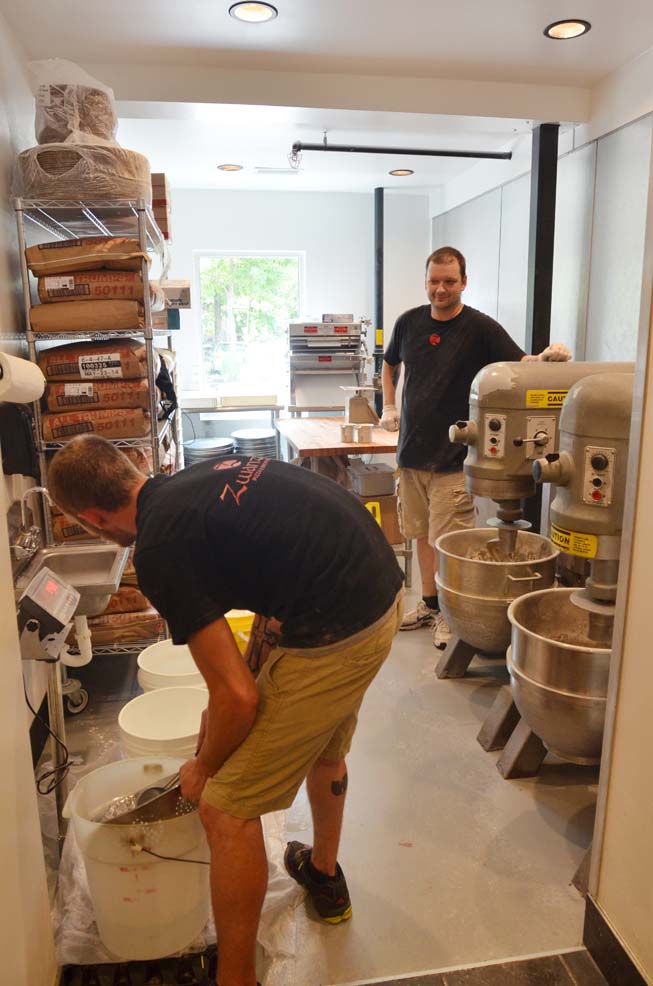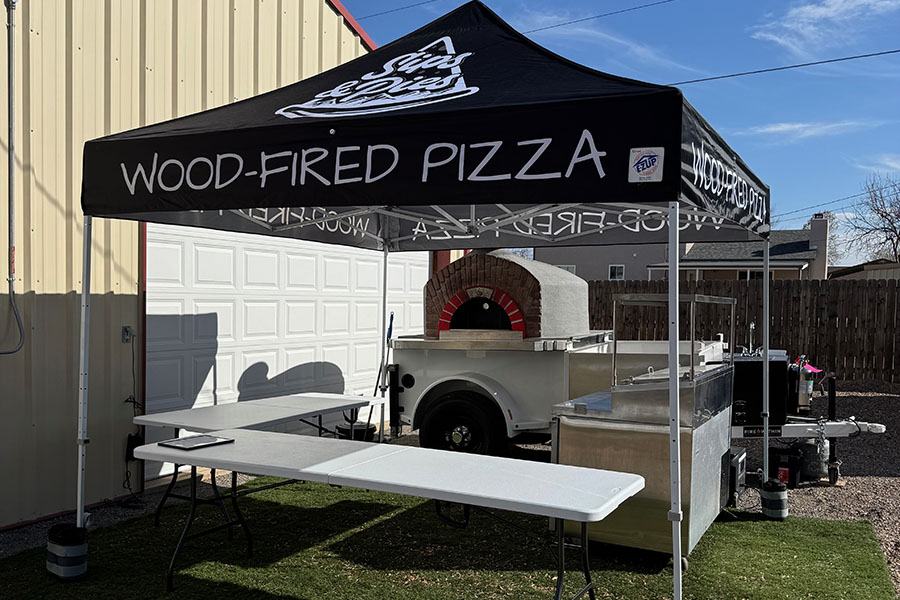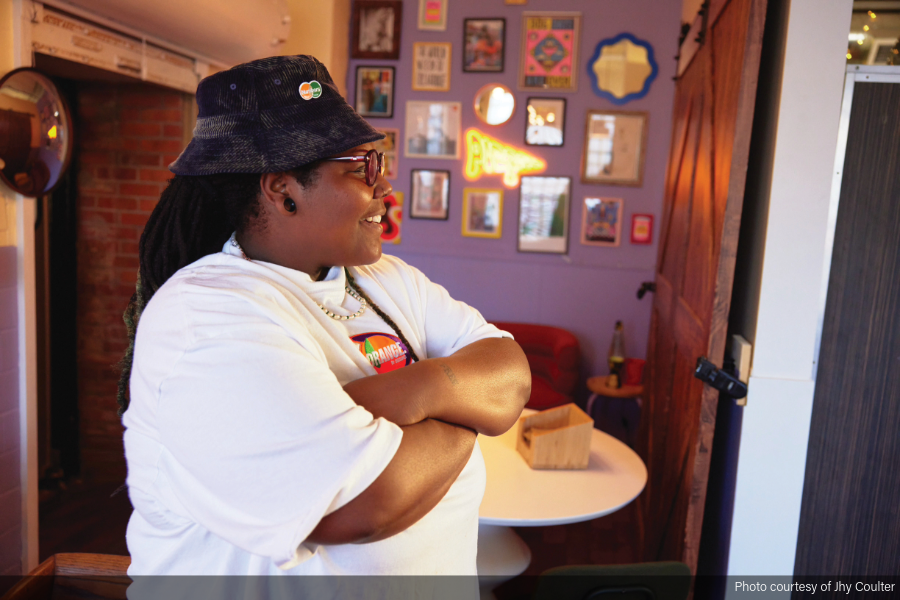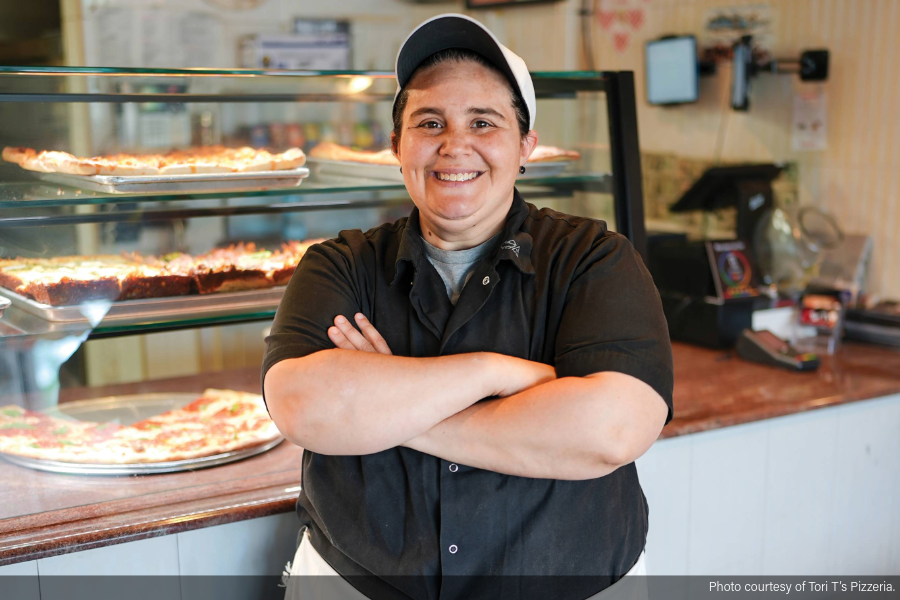 Does water temperature
Does water temperature
really matter?
Q: I have heard you speak several times at Pizza Expo and I’ve heard you make reference to the need to control finished dough temperature. How do you know what temperature water to use to get the dough temperature you’re looking for?
A: The reason why I reference finished dough temperature so often is because dough temperature is the key to effective dough management. If you have ever had a dough that blew during the night, or experienced a case where the dough balls all grew together in a dough box, you can relate first hand to the importance of dough temperature control.
There are two basic methods for finding the desired water temperature needed to achieve a specific finished dough temperature. The first method is one that I have used over most of my career in studying pizza (45-plus years). The method that we use to make almost all of our pizza doughs is referred to as the straight dough mixing method so we can use the equation for finding the desired water temperature for a dough mixed by the straight dough process.
This equation is expressed as 3 x the desired finished dough temperature minus the sum of the flour temperature, room temperature and friction factor. The friction factor is a number that we use to express the temperature gain of the dough during the mixing procedure resulting from hydration of the flour and friction of the dough as it scrubs across the interior of the mixing bowl.
To find the friction factor, we will need to use the equation for friction factor, which is 3 x the actual dough temperature minus the sum of the flour temperature, room temperature and water temperature. In this case, it is suggested that you use the coldest tap water temperature available to you from your tap. The resulting number will be the friction factor that you will need to plug into the equation for desired water temperature.
Keep in mind that the friction factor may need to be recalculated if you significantly change the mixing time or speed, or increase/decrease the dough size or agitator design. Examples for these calculations are as follows, friction factor is: 3 x actual dough temperature (85 F) minus the sum of the room temperature (70 F), flour temperature (68 F), and the actual water temperature (60 F). 3 x 85 = 255 minus (70 + 68 + 60) = 255 minus 198 = 57. The friction factor in this case is 57.
Now we’re ready to calculate our desired water temperature. The equation is 3 x the desired finished dough temperature (80 F) minus (room temperature (70 F) + flour temperature (68 F) + friction factor (57). 3 x 80 = 240 minus (70 F + 68 F + 57 = 45 F). The water temperature that is needed in this case to achieve a finished mixed dough temperature of 80 F is 45 F.
In this case the desired water temperature is colder than the actual tap water temperature of 60 F so we will need to chill the existing tap water to get it to 45 F. While there are even more calculations that could be followed for determining the amount of ice needed, the easiest way is to simply draw a quantity of your coldest tap water, slightly greater than the amount needed for your dough, and begin adding some ice to it while agitating. This will speed up the melting of the ice and quickly lower the temperature of the water to the targeted temperature which is
45 F in this case. Now all you need to do is to portion/weigh the correct amount of water from the container and you’re ready to begin assembling your dough ingredients into the mixing bowl. In some shops where they have a warm tap water temperature it is common for them to store large vats of water in their cooler to minimize the need for ice.
The other method that can be used for determining the correct water temperature to use to arrive at a predetermined (desired) dough temperature is as follows: subtract the flour temperature from the number 145. By this method if the flour temperature is 68 F you would subtract 68 from 145 = 77. This would be the desired water temperature to achieve a finished dough temperature in the 82 to 88 F range. Keep in mind that this formula is only intended for finished dough temperatures in the 82 to 88 F range. For finished dough temperatures outside of this temperature range or in cases where unusually warm shop conditions exist, you will need to refer to the previous calculations to calculate the correct water temperature.
Q: At the end of each day we always have some dough balls left over that have been prepared for opening but were not opened. Is it OK to mix this dough back into fresh dough that we are making for the following day?
A: The amount of scrap dough that you can add to your fresh dough will max out at between 10 and 15 percent of the dough weight, so if you are mixing fresh dough based on 50 pounds of flour, the total dough weight will be about 81.5 pounds, allowing for the addition of about eight to 12 pounds of scrap dough. Before you can proceed with adding the scrap dough back into the fresh dough, you need to make sure you have both the bowl capacity and the mixer capacity to handle the additional dough.
The easiest way to determine this is to begin gradually adding scrap dough into the fresh/new dough. I like to use three-pound increments and carefully monitor the mixer to make sure it is not being overloaded. The best time to add the scrap dough is as soon as the flour begins to hydrate which will be about three minutes into the mixing cycle with all of the scrap added no later than four minutes before completion of dough mixing, this will allow for thorough incorporation of the scrap dough with predictable performance for the fresh/new dough over the following days.
Tom Lehmann is a former director at the American Institute of Baking in Manhattan, Kansas and Pizza Today’s resident dough expert.

 Does water temperature
Does water temperature




